- Home
- Chimney Guide
- Chimney Cleaning Logs
Chimney Cleaning Logs
This post may contain affiliate links so I earn a commission.
Chimney cleaning logs have become a popular topic for many homeowners searching for an easy way to clean a dirty chimney and remove dangerous creosote buildup.
However, what many people don't realize is these products are not a substitute for a mechanical cleaning or an inspection by a certified professional.
How do the logs work?
The manufacture claims the logs contain special chemical additives that adhere to creosote inside your chimney as the log burns.
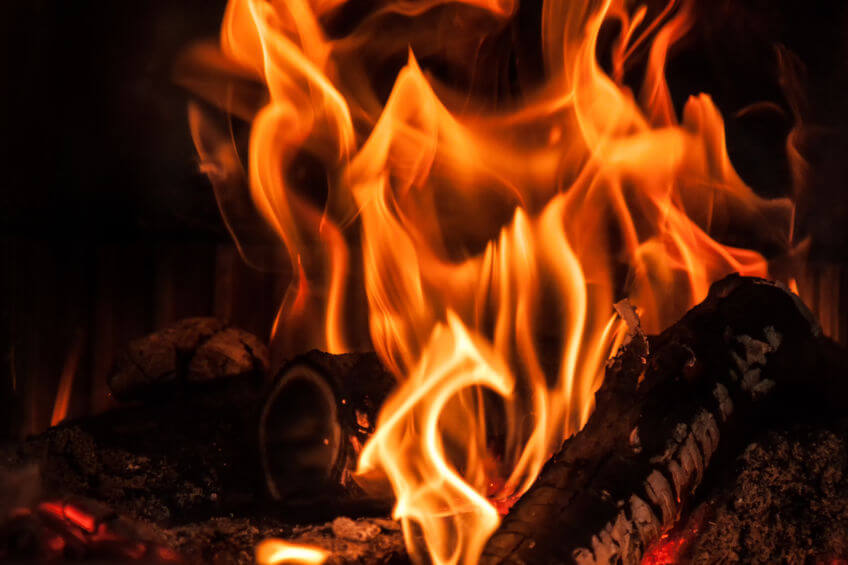
These substances are carried up the flue by hot gasses where they are deposited throughout your chimney claiming to treat, reduce and fight dangerous creosote buildup.
In theory, over a duration of 1 to 2 weeks the additives will attack the creosote causing it to become more brittle and either fall from the flue or become easier to brush away.
How Does Creosote Form?
When you light a fire, unburnt gasses from the combustion process travel up your chimney where they are released into the outside air.
Unfortunately, as the warm gasses travel up the chimney they come into contact with the colder chimney flue causing the unburnt particles to condense and adhere to the inside of the flue.
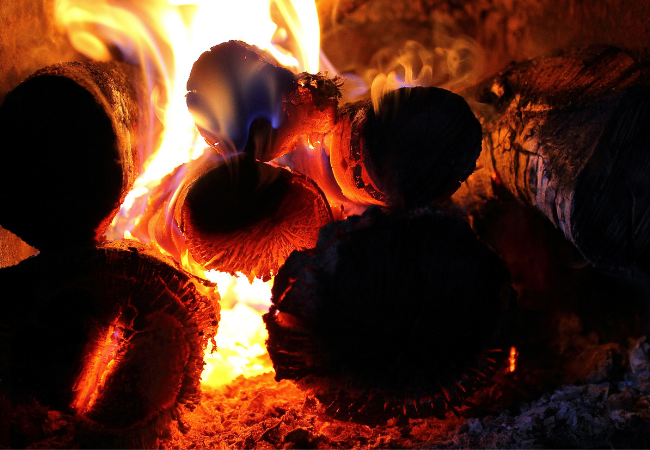
This formation is known as creosote and it's a good example why it's important to start a fast hot fire to heat up the chimney walls as opposed to a cool slow burning fire.
Over time the creosote can build up to a thickness that's very dangerous, allowing the possibility of a chimney fire.
Creosote has 3 basic stages:
Stage 1 is a very flaky, sooty substance that can easily be brushed away or cleaned.
Stage 2 the flakes are mixed with a hardened tar which usually requires rotary tools to remove.
Stage 3 is a hardened glaze which is nearly impossible to remove. Most chimney companies recommend replacing the chimney liner if creosote reaches this stage.
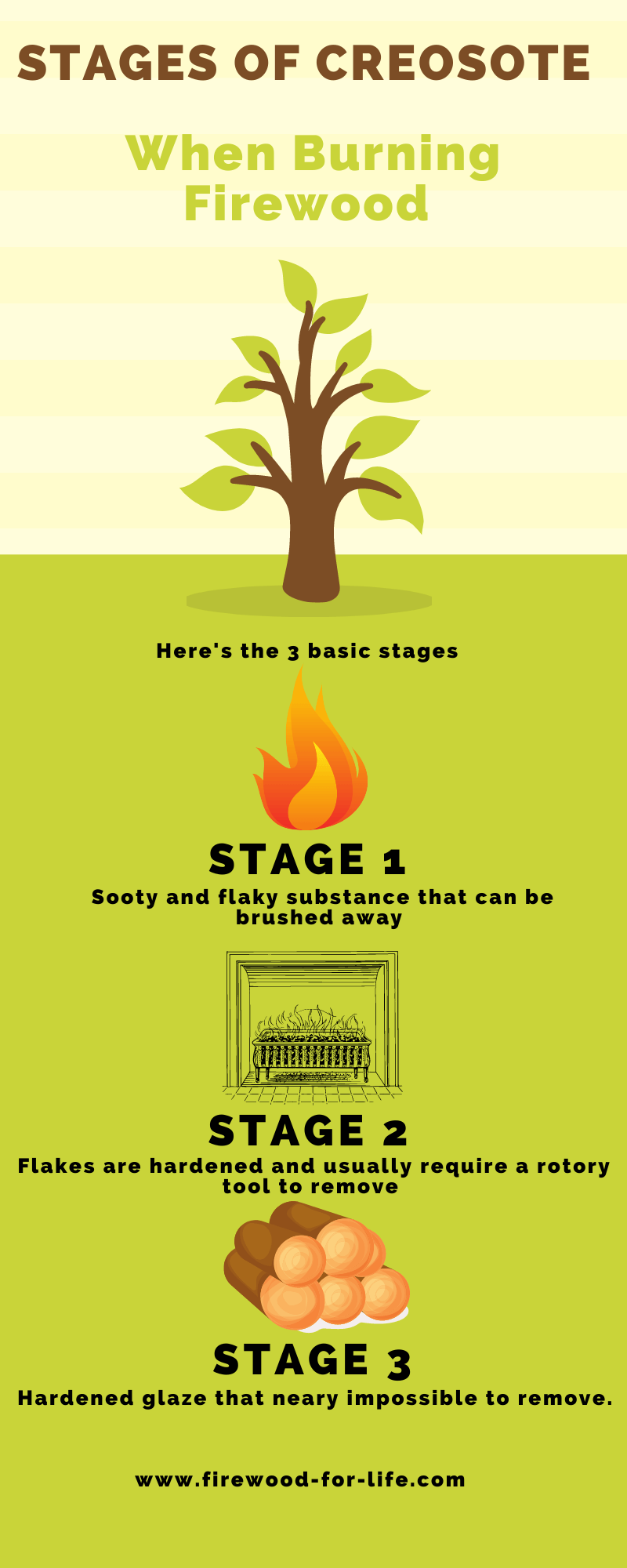
When burning firewood it's important to only burn dry, seasoned wood that burns hot and doesn't sizzle and smolder like wet firewood does.
Wet firewood increases the likelihood of creosote forming inside your chimney.
Typically, most species of firewood take about one year to season if you store it in a sunny location, stack it in rows elevated off the ground and keep it protected from rain and snow by covering the top 1/3 portion of the firewood stack.
EPA Certified Stoves
We've determined that creosote forms when unburned gasses from your fire adhere to the cool inner walls of your chimney, so what can you do to burn up all the gasses that are escaping up your chimney?
Today's EPA certified stoves burn extremely clean.......much cleaner than older stoves.
The science behind todays clean burning stoves involves modern technology in the form of either secondary burn equipment, which looks like small tubes with holes in them that run across interior ceiling of your wood stove, or a catalytic combustor.
If you look closely at the photo below you can see the secondary burn tubes with small holes running along the top of the firebox.
When the unburnt gasses ignite in these tubes, it reminds me of the northern lights dancing across the midnight sky. It looks really cool!
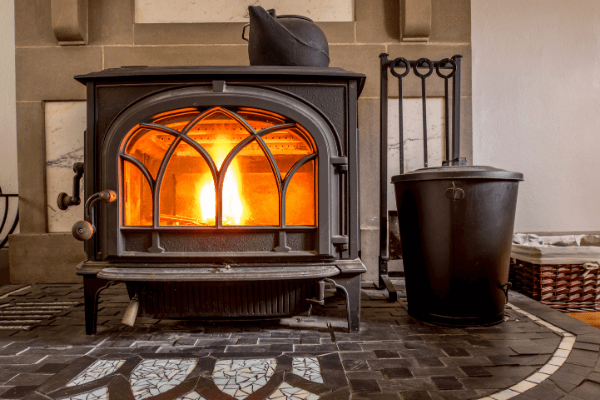
A catalytic combustor is pretty much the same thing as a catalytic converter in your car.
Lined with a platinum or palladium coating, it traps smoke and other combustion byproducts and ignites the smoke at around 500 degrees.
Without the catalytic combustor the smoke would not ignite until around 1100 degrees.
So as you can see, all those unburnt gases that would normally be going up your chimney are now effectively burned up in the fire box.
Although catalytic combustors work great, they can degrade over time and may need to be replaced.
They're not cheap, so many people who heat with wood prefer the secondary burn tubes that don't degrade over time.
Should You Use Chimney Cleaning Logs?
When using one of these products it's important to read all the instructions and understand the products limitations.
For example, fine print such as "does not take the place of inspection and professional cleaning" should not be overlooked.
It's also important to inspect the top of the damper and the smoke shelf for fallen creosote that may become concentrated in these areas after using the product.
The debris can be removed with a brush or an appropriate vacuum.
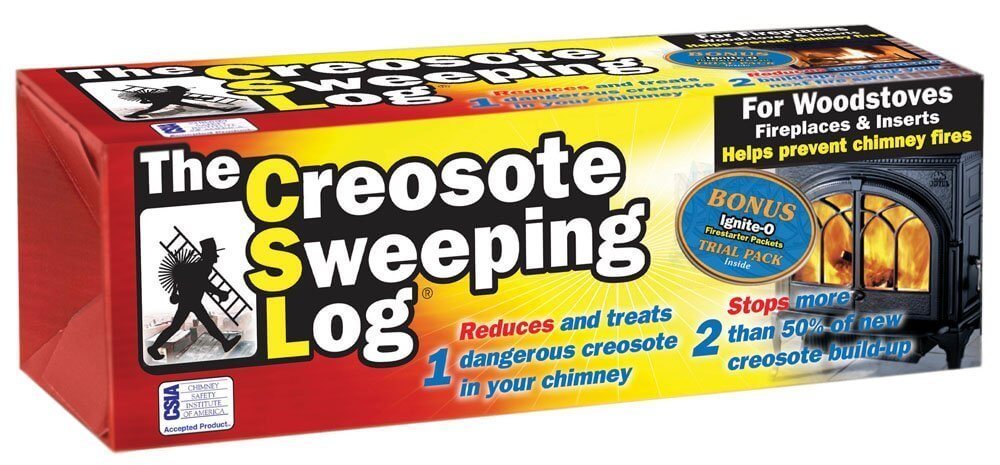
Many people, including myself, have spent the money and purchased a product such as a Chimney Sweeping Log hoping it will play a small role in reducing creosote buildup.
To the best of my knowledge there is no evidence that states the product does not work and you can read the multiple reviews from people who are very satisfied after many years of using them.
As stated before, there is no substitute for burning seasoned firewood.
Proper burning techniques such as preventing a low temperature smoldering fire, and a mechanical cleaning play a vital role in a safe burning fire.
Plus, at a minimum you should have a certified professional inspect and clean your chimney at least once a year.
Chimney Cleaning Logs - Overall
Are chimney cleaning logs worth the money?
I believe the logs can offer two things....piece of mind and the possibly of reducing creosote or making existing creosote easier to mechanically clean and remove.
However, if you expect to purchase a chimney cleaning log, never read the fine print or follow the manufactures instructions and expect a maintenance free chimney, a cleaning log is not the right choice for you.

About the Author
Obsessed with firewood, Nick is behind over 350+ of Firewood For Life's articles, as well as countless reviews, guides and YouTube videos to help readers like you reduce heating costs and create the perfect fire.


